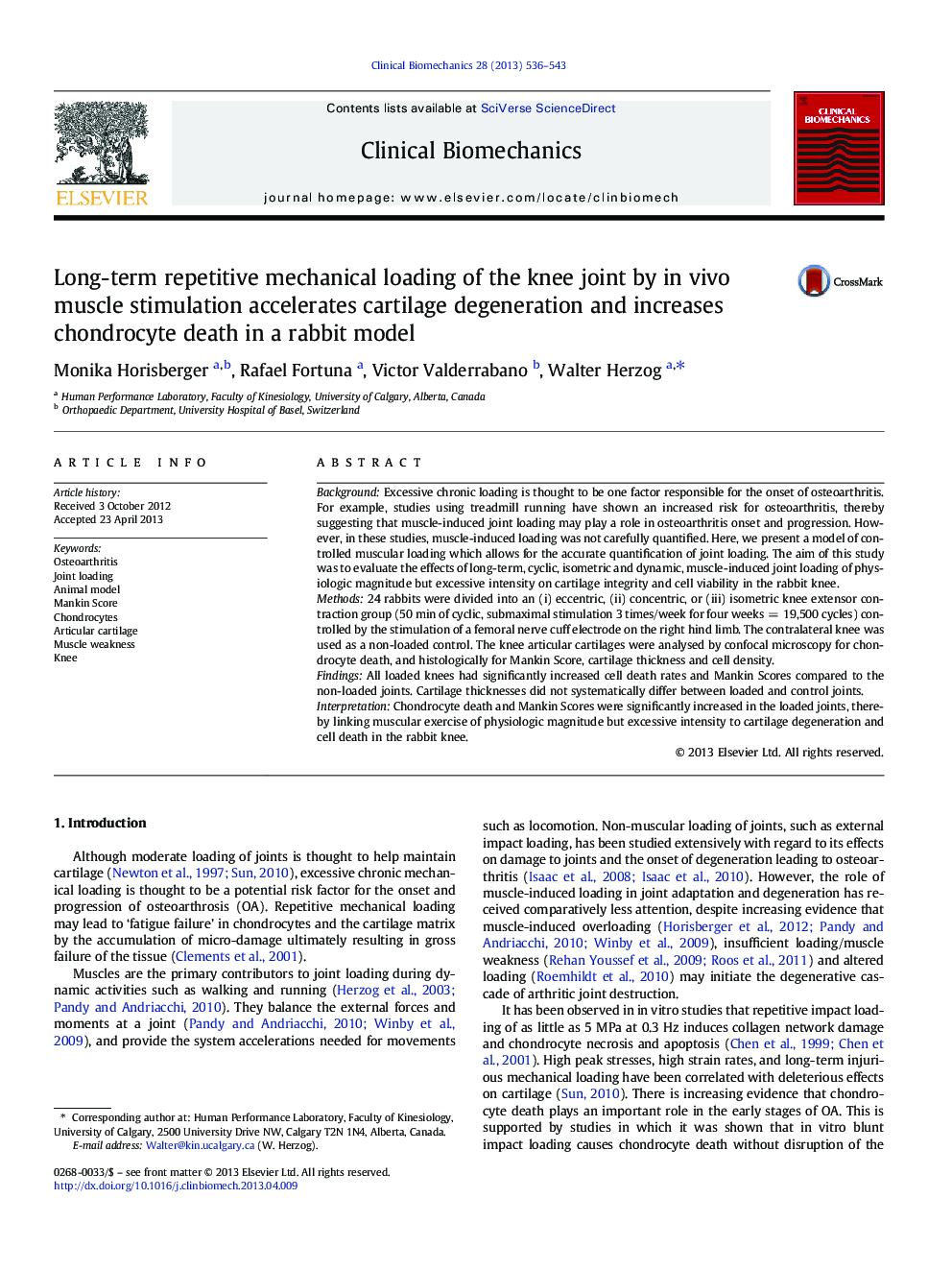| Article ID | Journal | Published Year | Pages | File Type |
|---|---|---|---|---|
| 4050701 | Clinical Biomechanics | 2013 | 8 Pages |
BackgroundExcessive chronic loading is thought to be one factor responsible for the onset of osteoarthritis. For example, studies using treadmill running have shown an increased risk for osteoarthritis, thereby suggesting that muscle-induced joint loading may play a role in osteoarthritis onset and progression. However, in these studies, muscle-induced loading was not carefully quantified. Here, we present a model of controlled muscular loading which allows for the accurate quantification of joint loading. The aim of this study was to evaluate the effects of long-term, cyclic, isometric and dynamic, muscle-induced joint loading of physiologic magnitude but excessive intensity on cartilage integrity and cell viability in the rabbit knee.Methods24 rabbits were divided into an (i) eccentric, (ii) concentric, or (iii) isometric knee extensor contraction group (50 min of cyclic, submaximal stimulation 3 times/week for four weeks = 19,500 cycles) controlled by the stimulation of a femoral nerve cuff electrode on the right hind limb. The contralateral knee was used as a non-loaded control. The knee articular cartilages were analysed by confocal microscopy for chondrocyte death, and histologically for Mankin Score, cartilage thickness and cell density.FindingsAll loaded knees had significantly increased cell death rates and Mankin Scores compared to the non-loaded joints. Cartilage thicknesses did not systematically differ between loaded and control joints.InterpretationChondrocyte death and Mankin Scores were significantly increased in the loaded joints, thereby linking muscular exercise of physiologic magnitude but excessive intensity to cartilage degeneration and cell death in the rabbit knee.
